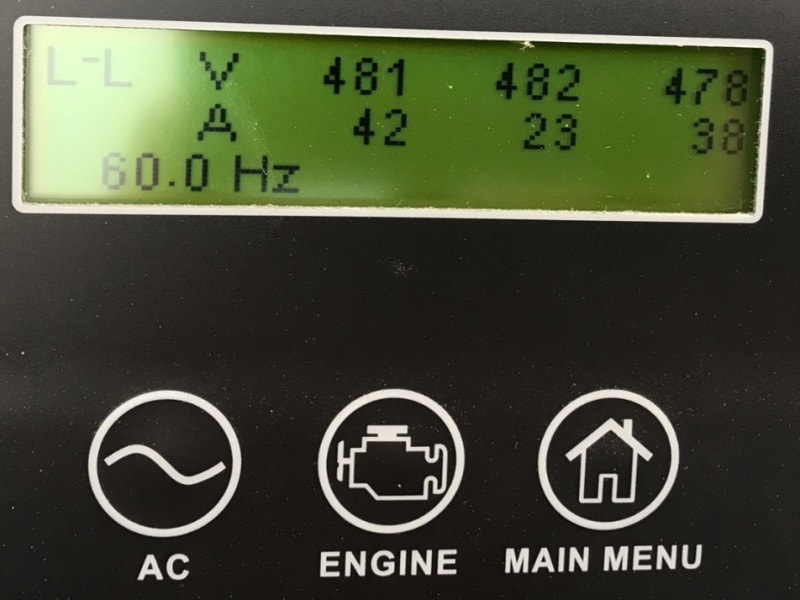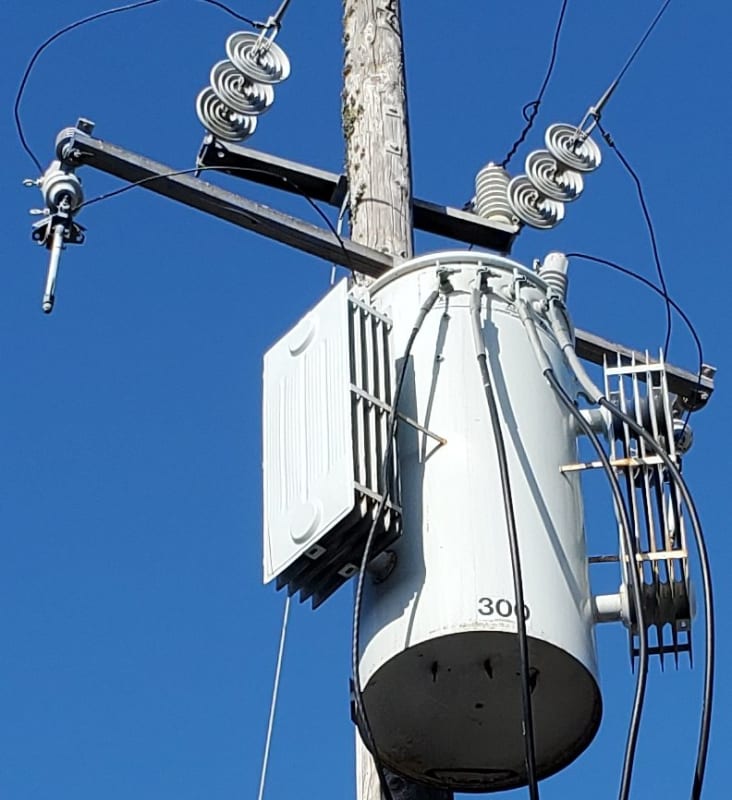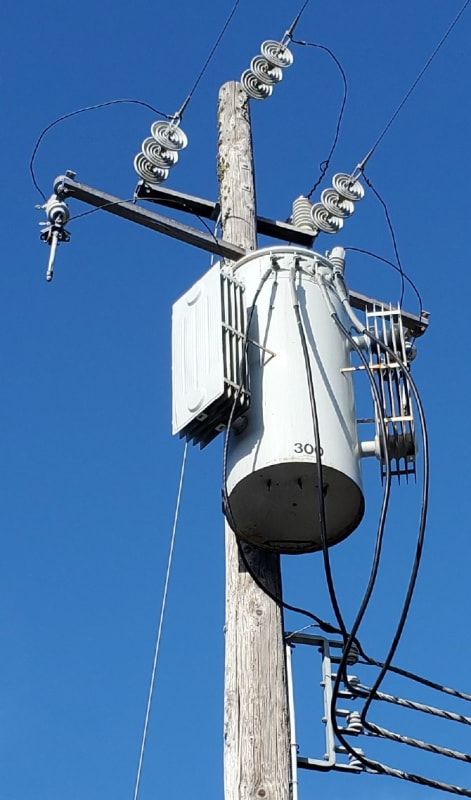itsmoked
Electrical
- Feb 18, 2005
- 19,114
I have a big generator that's costing $8,100/mo to rent.
$150/mo fee for the CA air quality board.
$4,400/mo fuel.
Waiting for the new power drop from the POCO will take at least 8~9 months.
We're searching for a solution to the $12,650/mo pain.
The generator panel has never shown more than 50A @ 480V.
I have a power pole field drop with 200A 240V delta service barely used, a couple of lights.
One way distance is 750ft.
I have a 240/480 50kVA transformer.
2 AWG will cause a 2% drop carrying 50A.
My biggest concern is motor starting. I don't yet know what the largest motor is that needs to be supported. From memory I don't think there's probably one bigger than 15hp/480v but I'll have to check later today.
What do you think, doable?
If you think this can work, do you have any suggestions for 'cheap' cable or wire? This is all temporary.
Keith Cress
kcress -
$150/mo fee for the CA air quality board.
$4,400/mo fuel.
Waiting for the new power drop from the POCO will take at least 8~9 months.
We're searching for a solution to the $12,650/mo pain.
The generator panel has never shown more than 50A @ 480V.
I have a power pole field drop with 200A 240V delta service barely used, a couple of lights.
One way distance is 750ft.
I have a 240/480 50kVA transformer.
2 AWG will cause a 2% drop carrying 50A.
My biggest concern is motor starting. I don't yet know what the largest motor is that needs to be supported. From memory I don't think there's probably one bigger than 15hp/480v but I'll have to check later today.
What do you think, doable?
If you think this can work, do you have any suggestions for 'cheap' cable or wire? This is all temporary.
Keith Cress
kcress -



